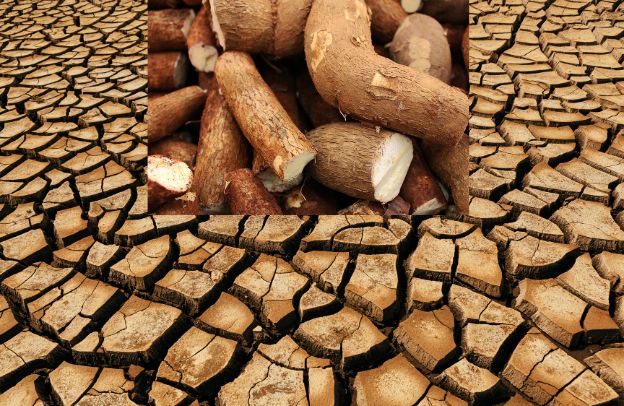A Comprehensive Guide for Data and Monitoring Systems in Cassava Farming

The future of Africa’s agribusiness lies not just in the soil, but in the data. With Africa’s agricultural sector projected to grow substantially in the coming decades, now is the time for the African diaspora to dive into farming with data-driven strategies. One crop that stands at the heart of this revolution is cassava, a staple that feeds millions and offers incredible potential for both local and global markets.
Want to learn more about storytelling? Start by downloading the first chapter of The Storytelling Mastery.
If you are part of the African diaspora looking to explore agribusiness opportunities, there’s a simple yet powerful way to step up your game: Data collection and monitoring systems.
In today’s globalized economy, agribusiness isn’t just about hard work in the fields—it’s about working smarter, and using data to make informed decisions that can drive profitability and sustainability.
By implementing data collection and monitoring systems in cassava farming, you can optimize yields, reduce waste, and respond effectively to market demands. But this isn’t just about technology—it’s about collaboration.
The African diaspora community has the unique opportunity to bring together expertise, capital, and a shared vision to transform Africa’s agricultural sector. By working together, you can leverage the latest tools and technologies to not only grow your business but also contribute to the continent’s food security.
See alsoTransforming Africa’s Food Security Crisis into Agribusiness Prosperity
In this article, we will walk you through why data collection matters in cassava production, the types of monitoring systems you can implement, and how the African diaspora can collaborate to build an agribusiness ecosystem that thrives. The future of cassava farming is data-driven, and it’s time to be part of that change.
The Importance of Data in Cassava Production
Africa’s population is projected to reach 2.5 billion by 2050, with much of that growth occurring in urban areas. This demographic shift will dramatically increase the demand for food, including cassava, which is grown in over 40 African countries. Today, cassava is Africa’s most widely produced root crop, with Nigeria alone contributing over 20% of the global supply. However, despite its potential, the cassava industry is still highly inefficient, with yields that are often far below their potential due to factors such as poor infrastructure, climate challenges, and limited access to advanced farming techniques.
Here’s where data collection comes in. Whether you are a smallholder farmer or a large agribusiness operator, the ability to collect and analyze real-time data can make the difference between success and failure.
Data-driven approaches allow you to monitor critical variables such as soil health, weather patterns, irrigation needs, and pest infestations. This not only improves the quality and quantity of your crop but also gives you a competitive edge in the global market.
With access to data, you can also minimize risks by forecasting potential problems before they escalate and making proactive decisions instead of reactive ones.
The beauty of data is that it can transform every aspect of cassava production—from improving seed selection to identifying the best times to plant and harvest. It helps you track changes in soil conditions, ensuring that your land remains fertile and productive.
This ability to optimize the production process is especially important as cassava farming in Africa is frequently hampered by unpredictable weather patterns and soil degradation.
Types of Data Collection and Monitoring Systems for Cassava Farming
In the past, cassava farmers relied on traditional methods passed down through generations, but these methods are no longer sufficient in a world where technology offers more precise, efficient ways to farm.
See also Unlocking Nigeria’s Agricultural Potential: A Path to Food Security
Today, a variety of innovative tools and systems are available to help you monitor your farm’s health, understand your crop’s needs, and ultimately increase your yield. Below are some of the most effective data collection and monitoring systems that can make a significant impact on cassava farming.
1. Internet of Things – Devices and Sensors
Internet of Things (IoT) devices have made their way into agriculture, transforming how farms operate. These devices are equipped with sensors that monitor various environmental factors in real time.
For cassava farming, soil moisture sensors, temperature sensors, and weather stations are particularly valuable.
Soil moisture sensors can help you optimize irrigation schedules by providing real-time data on when the soil is dry and needs water, preventing overwatering or underwatering.
Temperature sensors can track climate variations that might affect cassava growth, while weather stations provide accurate data on rainfall, temperature, and humidity, helping you predict the best planting and harvesting windows.
2. Mobile Apps and Platforms
In many parts of Africa, mobile phones have become ubiquitous, even in rural areas. Leveraging mobile technology is one of the most cost-effective ways to gather data and monitor cassava production.
There are various mobile apps specifically designed for farmers, offering functionalities like task scheduling, pest and disease management, and financial tracking.
For example, apps like FarmCrowdy in Nigeria are helping smallholder farmers collect and share data about crop conditions, market prices, and other vital information.
By using these apps, you can stay informed and make better decisions in real time, all from the convenience of your mobile phone.
3. Remote Sensing Technologies (Satellites and Drones)
Remote sensing technologies, such as satellites and drones, offer a bird’s-eye view of your entire farm. These technologies can be used to monitor large swathes of land that might be difficult to reach or observe manually.
Satellites provide valuable data on soil moisture, crop health, and even pest outbreaks, while drones can give you high-resolution images of your cassava crops, allowing you to identify areas of stress or disease long before they’re visible to the naked eye.
This data can be processed using specialized software, providing a detailed map of your farm that highlights areas requiring attention.
See also Processing Cassava for Increased Profit: A Guide for Nigerian Farmers
For example, if a pest infestation is detected in one part of the field, you can take targeted action to control it, rather than applying pesticides across the entire field.
4. Data Analytics Software and Cloud Platforms
The data collected from IoT devices, mobile apps, and remote sensors can be aggregated and analyzed using cloud-based platforms. These platforms allow you to make sense of large datasets, turning raw data into actionable insights.
With cloud solutions, you can analyze crop growth patterns, track yields, and predict harvest times. Predictive analytics can also help forecast market demand and pricing trends, allowing you to plan your operations more effectively.
In cassava farming, these systems can be especially useful for estimating yields and setting realistic production targets based on historical data.
Implementing Data Collection and Monitoring Systems in Your Cassava Farm
Once you understand the tools and systems available to you, the next step is to implement them effectively.
As a diaspora entrepreneur, you may be new to the agricultural sector or looking to expand your existing operations. Here’s how you can begin integrating data-driven strategies into your cassava farming business.
1. Assess Your Farm’s Data Needs
Before diving into technology, take a step back and assess what your farm needs. What challenges are you facing? Do you need to monitor soil moisture levels, or is pest management your biggest concern? Identifying the specific data you need will help you choose the right tools for your farm’s unique situation.
2. Choose the Right Tools and Technologies
Not every farm needs to implement every available technology. Some solutions, like mobile apps and basic sensors, are relatively inexpensive and can provide immediate benefits.
Other systems, like satellite imaging and drones, might require a larger upfront investment. It’s essential to align the tools you choose with your business goals, your available budget, and the scale of your operations.
For smallholder farmers, starting small with affordable mobile apps and sensors can be a great first step.
For larger-scale operations, investing in remote sensing technologies or cloud-based analytics systems can help you manage a larger volume of data and optimize farm operations.
3. Train Your Team
Adopting new technologies requires training. Ensure that your farm workers are well-equipped to use the systems you’ve implemented. This might involve formal training sessions or working with local agricultural extension services to provide on-the-ground support.
The more your team understands the benefits of data collection, the more successful your efforts will be.
4. Integrate Data into Daily Operations
Data collection should become a regular part of your daily operations. Whether it’s tracking soil moisture levels or checking pest traps, encourage your team to monitor key metrics regularly. The more data you collect, the more insights you’ll have to make better decisions.
Collaboration: The Key to Success in Agribusiness
While individual efforts are important, collaboration within the African diaspora community is what will truly drive agribusiness success. By pooling resources, knowledge, and technology, you can create a network of support that amplifies the impact of your work.
Diaspora entrepreneurs often have access to capital, networks, and expertise that can be leveraged to bring advanced farming technologies to African farms.
Whether it’s through partnerships with tech companies, collaborations with local farmers, or even sharing knowledge about best practices, the power of working together cannot be overstated.
See also Preventing Soil-Borne Diseases in Cassava Farming: Crop Rotation Strategies for Nigerian Farmers
Organizations like African Agri-Tech and Agri-Digital are already providing platforms for diaspora entrepreneurs to collaborate and innovate together.
By joining forces, you can scale your agribusiness, increase your market reach, and make a more significant impact on food security in Africa.
The Path Forward: Continuous Learning and Self-Improvement
The journey into agribusiness is ongoing. To succeed in today’s fast-changing environment, you must be committed to continuous learning. Stay informed about new farming techniques, emerging technologies, and market trends.
Take courses, attend workshops, and join agribusiness communities to keep improving your knowledge and skills.
Incorporating data into your cassava farm will require an ongoing effort to stay up to date with new tools and technologies. But with the right attitude—one of collaboration, learning, and adaptability—you can make data-driven farming a powerful tool for business growth.
Conclusion: Data is the Future of Cassava Farming
For the African diaspora entrepreneur, the opportunity to build a profitable, sustainable agribusiness in cassava farming is within reach. Data collection and monitoring systems are no longer just a luxury—they are essential to modern farming.
By embracing these technologies, you can increase yields, reduce costs, and stay competitive in an ever-changing global marketplace.
The African diaspora has the resources, knowledge, and collective power to drive the transformation of Africa’s agricultural landscape.
By collaborating with fellow entrepreneurs, sharing knowledge, and continuing to innovate, you can not only build a successful business but also contribute to the larger goal of feeding Africa’s growing population. The future of cassava farming is data-driven, and that future starts with you.
Want to learn more about storytelling? Start by downloading the first chapter of The Storytelling Mastery.





